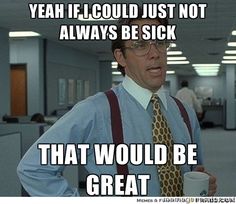Regardless of whether you consider it to be good or bad, the drinking culture at Penn State (and on many college campuses) is large. This fact has been addressed in other people’s posts as well. And I’m sure most of us, even if we don’t really drink, have heard the phrases “liquor before beer, you’re in the clear” and “beer before liquor, never been sicker”. After hearing about and thinking of these phrases, I was compelled to find out if they are actually true. So, does it really matter what order you consume different types of alcohol in, and does the order affect the consumer’s health in any way?
The Null hypothesis in this study is that it does not matter what order you drink different types of alcohol in. The alternative hypothesis is that the order of alcohol types consumed has an effect on whether or not the consumer becomes sick or gets a hangover. The independent variable here is alcohol consumed, and the dependent variable is sickness or hangovers.
First, we have to look at how the body processes alcohol. Brown University does a good job of explaining simply, stating that after consumption, alcohol is absorbed into both the small intestine and the stomach. Enzymes in the liver then break down the alcohol. The liver is only able to process one standard drink an hour, and if the consumer drinks more than that, the liver becomes saturated and the extra alcohol builds up in the blood and tissues until it can be processed. The liver does not necessarily process different types of alcohol at different rates. As stated earlier, the liver can only process one standard drink an hour- which means 12 ounces of beer, 5 ounces of wine, or 1.5 ounces of spirits or hard liquor. In addition to that, George Washington University explains that the body metabolizes .015 BAC an hour, which is equal to that one standard drink an hour. So if we know how the body works and how long it takes to sober up, why do so many people still follow old urban myths?
Allison Van Dusen of Forbes Online debunks these claims in a 2007 article. She cites Julia Chester of Purdue University, saying that it does not matter which order you drink alcohol in. The only difference is that the body does in fact absorb different types of alcohols at different rates- for example, a 12 ounce glass of beer will be absorbed more slowly ton an empty stomach than it’s liquor equivalent. All in all, it’s the speed at which you drink that has the biggest pull on sickness and level of intoxication. So, simply put, the phrase is more or less useless. If the average consumer follows that phrase in hopes of avoiding a hangover, there are much better ways to do that.
Some of the best ways, writes Jess Novak of the Daily Meal (2014) include drinking less, drinking water alongside your alcohol, and even taking an Advil before bed. Obviously, no one under the age of 21 should be consuming alcohol in the first place. There are obviously also third variables that can affect a person’s level of intoxication, such as weight, tolerance and amount of food in the drinker’s stomach. Another important point to address is the potential power of the anecdote. For example, a person could easily say that they are an adamant believer in the “liquor before beer, you’re in the clear” phrase, just because they followed the rule and didn’t get sick or get a hangover. But, that person could’ve also taken other measures whether knowingly or unknowingly to prevent themselves from becoming sick or getting a hangover. In fact, it’s likely that both phrases were actually created based off of repeated anecdotes alone, with no science to back up the phrase.
To conclude, it can be said that the average consumer of alcohol should not worry about or follow those phrases. Rather than change the order of alcohol consumption, a person should instead limit their drinking and be more cautious of their pace.
Image 1 found here
Image 2 found here











